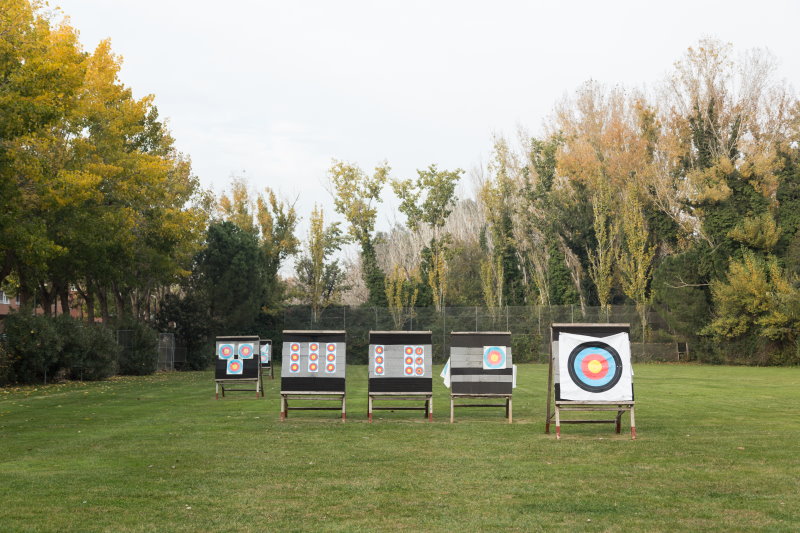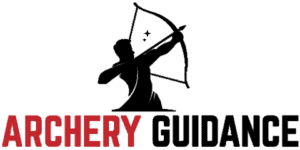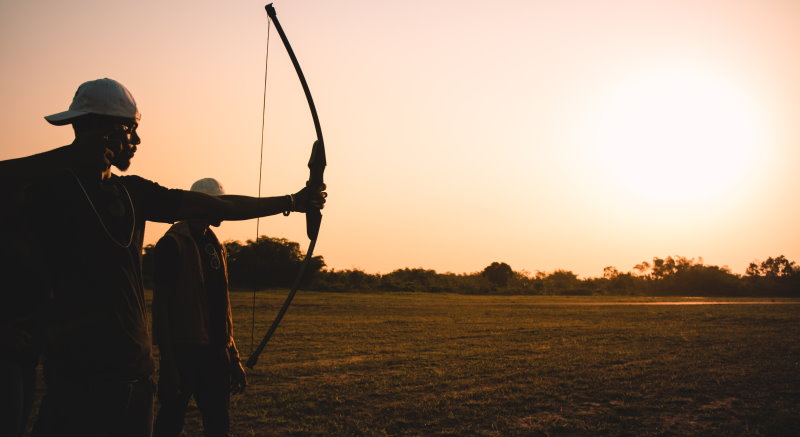The longest arrow that landed on target was shot from a whopping 450 yards. This incredible feat was achieved by the Hungarian archer, Josef Monus.
Archers aren’t required to be able to land such a shot, but they should be able to consistently hit close-range targets. Sights are a great way to make that happen.
Your bow sights should help you land consistent shots starting from 10 yards up to 70 yards. The sight can have a single adjustable pin or multiple pins for various distances with minimum to no adjustment. They’re fairly easy to attach and calibrate.
It’s not common for some archers to use their bows without a sight, but if you want to up your game over longer distances, you should consider a sight for your bow.
Read on to learn more about the different bow ranges and how to sight your bow.
What Ranges Should You Sight Your Bow?

The most common ranges start from 10 yards for beginners, all the way up to 70 yards. Having a sight is not a must, but if you plan to shoot beyond 20 yards, a sight is recommended.
Check out this article, as well as this one, to see how far bows can shoot accurately.
There are multiple sights from many manufacturers that you can attach to your bow to enhance your aiming experience.
The sight consists of a ring-shaped housing that you attach to your bow. Inside the housing, you will have one or more pins. Each pin is calibrated by the archer to a certain distance.
The most common types of sights have either one, three, or five aiming pins.
1-Pin Sight
The one-pin sight is often movable, you can adjust the pin according to the distance you desire.
One-pin sights offer the advantage of being straightforward, you won’t have to select a sight for every distance, you can simply move your pin according to the distance you’re planning to shoot from.
However, if you’re hunting a deer, for example, and it moves toward or away from you, you’ll have to adjust the pin accordingly. This can be a disadvantage if the first arrow doesn’t land where you wanted and the deer starts to run away.
3-Pin Sight
The three-pin sight is the most versatile. You can set the three pins to any distance you like. The most common configuration for the three-pin sight is 20, 40, and 60 yards.
It’s easier to use than the five-pin sight because It’s much easier to focus on one of three pins rather than one of five. Additionally, in most three-pin sights, you can also move the sights up and down to change the effective distance of each pin.
5-Pin Sight
The five-pin sight is the one you should go for if you don’t want to constantly keep modifying the pins for different distances. You can permanently adjust each pin for a certain distance, and since there are five of them, you’re less likely to need further modifications.
However, the eye finds it difficult to align one out of five pins with the target. If you’re not experienced enough, it’s best to avoid this sight for now.
We talked a lot about adjusting the sight. The reason behind that is that most sights need calibration before you can reliably use them. How to do that? Read on.
3 Tips on Sighting Your Bow

Installing the sight on your bow is simple, but calibrating it is a little challenging. For starters, you need to be able to hit the bullseye consistently without the sight at close range.
The reason behind this is that you’ll calibrate the sight based on how far the bow goes off the mark. If the bow misses the mark because of your wrong form or lack of skill, you won’t calibrate your sight correctly.
To be more convenient, we’ll discuss how to adjust the most common sight, the three-pin sight. We’ll assume that we want the top pin’s shooting distance to be 20 yards, followed by 30 and then 40 yards, respectively for the other two pins.
Adjusting the 20-Yard Pin
Firstly, stand 20 yards away from the target. Then, shoot five arrows. The arrows should all land in the same area even if it’s not the area you’re aiming for. If the arrows are scattered, then your form or aim isn’t correct.
We’ll assume that the five arrows landed above and to the left of where you’re aiming. Loosen the sight housing and move it slightly up and left. Then, shoot five more arrows.
Keep doing this until the five arrows land where you’re aiming.
Remember, move the sight housing towards the deviation of your arrows which in our example is up and left.
Adjusting the 30-Yard Pin
Now is the time to adjust your 30-yard pin (the middle pin). This is when things get a little complicated.
Use the 30-yard pin and shoot five arrows at your target from a 30-yard distance. If the arrow doesn’t land where you shoot, then you have one of two scenarios:
- The rest of your bow may not be tuned correctly
- The 30-yard pin might need adjustment
The correct order of things is to make sure that your bow rest is tuned correctly first, then adjust the pin. Here’s how you should go about doing so:
The Bow Rest Adjustment
Keep in mind that if you’re using a longbow, you won’t have to worry about adjusting the rests since longbows have none. Check this article to know more.
Use the 20-yard pin to shoot two arrows from a 30-yard distance, then two more arrows from the 40-yard distance.
The arrows will land lower than your aim, which is normal. However, if they keep consistently landing to the right or to the left of the target, then your bow rest needs to be readjusted.
Remember when we said that we move the sight housing towards the error? This time we will do the reverse. If your arrows are landing to the left, then move your rest to the right.
The movement should be minor. A tweak as little as 1/16 of an inch can make a big difference. Keep adjusting the rest until the arrows stop deviating left or right.
The Pin Adjustment
You now have your rest well-aligned, it’s time to go back and adjust that 30-yard pin. Shoot five arrows from a distance of 30 yards at your target.
The arrows won’t land right or left to your target now because you adjusted the sight housing and the bow rest.
The only error you should get at this point is the arrow landing too high or too low. You’ll adjust the pin itself in the direction of the error to fix it.
Adjusting the 40 Yard-Pin
Adjusting the 40-yard pin shouldn’t be any different from the 30-yard pin now. If the arrow lands too low, move your pin down and vice versa.
Sights Are Your Crosshairs
Putting a sight on your bow and adjusting it to specific distances is similar to crosshairs in firearms. All you have to do is focus on the pin that corresponds to the distance you’re shooting from.
Before you do that, though, you need to correctly calibrate your sight so you can reliably use it. Being able to land consistent shots in archery is one pleasant feeling that you don’t want to miss.
If you want an in-depth look at sights, read this article.

